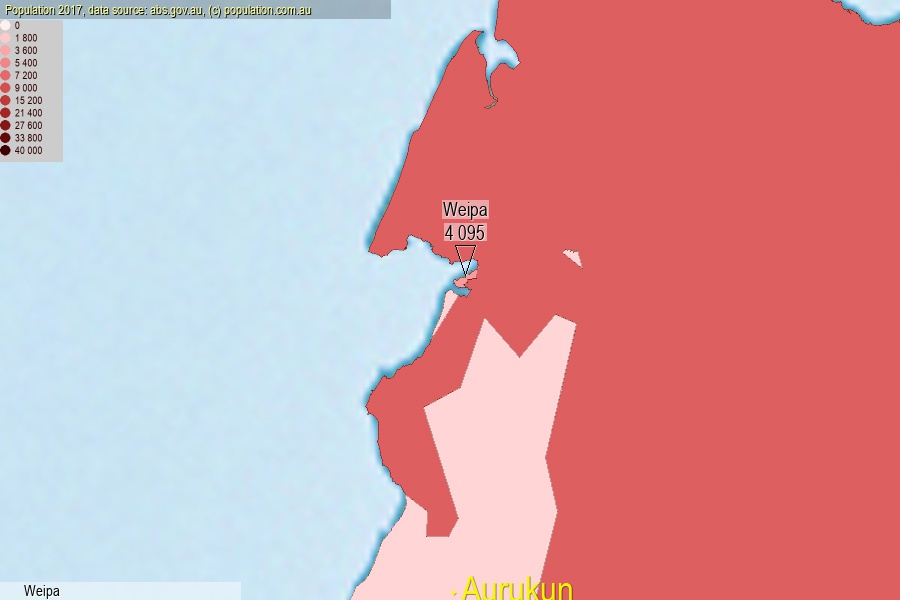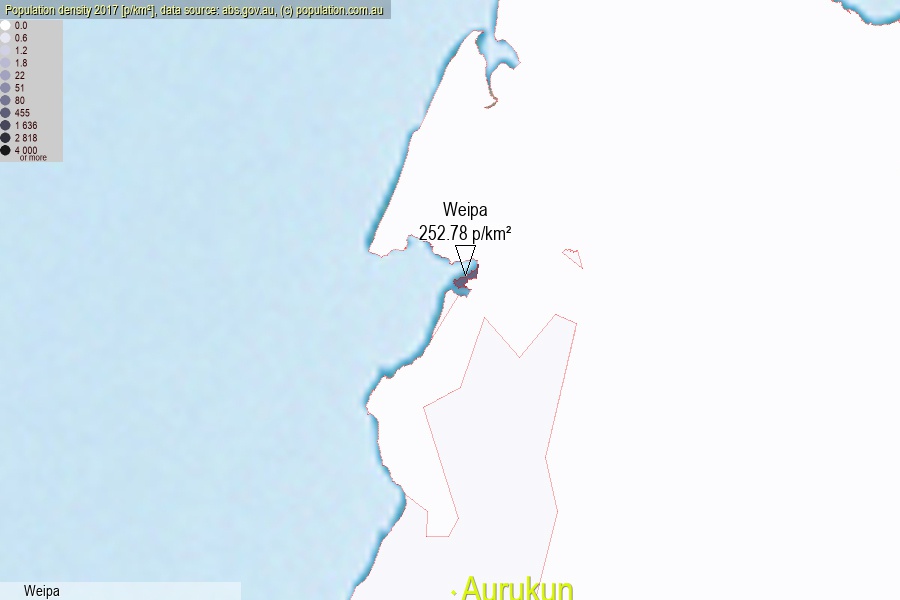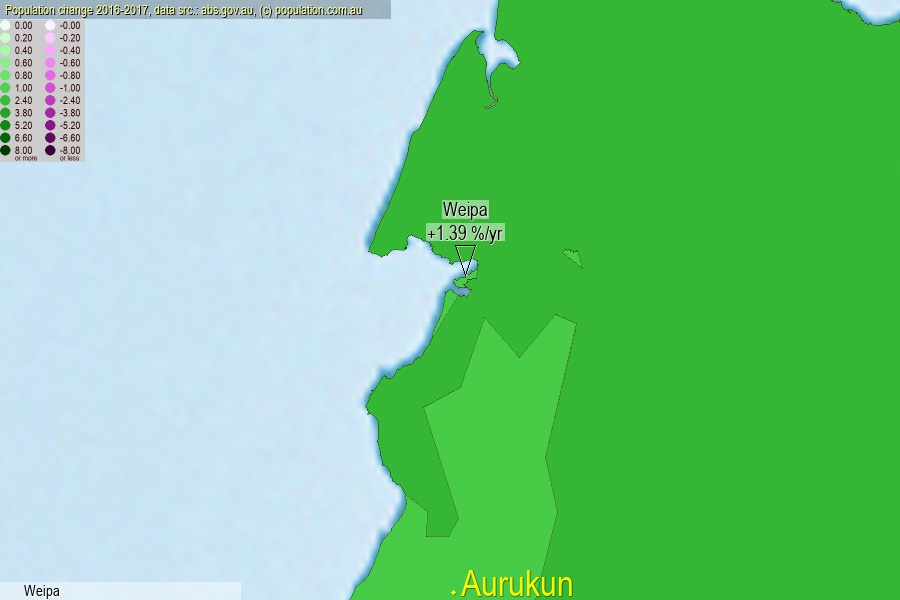 population.com.au
population.com.auLast official estimated population of Weipa (as Statistical Area Level 2) was 4 095 people (on 2017-06-30)[2]. This was 0.02% of total Australian population and 0.082% of QLD population. Area of Weipa is 16.20 km², in this year population density was 252.78 p/km² . If population growth rate would be same as in period 2016-2017 (+1.39%/yr), Weipa population in 2025 would be 4 572. [0]



Click to enlarge. Weipa is located in the center of the images.
Population [people], population density [p./km²] and population change [%/year] [2]
View borders » (new window) [4]
[1991-1992] +1.12 %/Yr.
[1992-1993] -1.86 %/Yr.
[1993-1994] -0.57 %/Yr.
[1994-1995] -0.45 %/Yr.
[1995-1996] +0.49 %/Yr.
[1996-1997] -6.25 %/Yr.
[1997-1998] -7.45 %/Yr.
[1998-1999] -2.15 %/Yr.
[1999-2000] +1.15 %/Yr.
[2000-2001] +0.71 %/Yr.
[2001-2002] +5.16 %/Yr.
[2002-2003] +5.62 %/Yr.
[2003-2004] +5.91 %/Yr.
[2004-2005] +8.54 %/Yr.
[2005-2006] +6.65 %/Yr.
[2006-2007] +7.96 %/Yr.
[2007-2008] +3.61 %/Yr.
[2008-2009] +1.76 %/Yr.
[2009-2010] +1.03 %/Yr.
[2010-2011] +2.58 %/Yr.
[2011-2012] +6.81 %/Yr.
[2012-2013] +3.72 %/Yr.
[2013-2014] +1.61 %/Yr.
[2014-2015] +2.83 %/Yr.
[2015-2016] +1.94 %/Yr.
[2016-2017] +1.39 %/Yr.
[0] Calculated with linear interpolation from officially estimated population
[1] Read more about SA2 and Australian Statistical Geography Standard (ASGS) on abs.gov.au
[2] Population data from Australian Bureau of Statistics (Population and density: 2017; change: 2016-2017)
[3] Digital Boundaries: Australian Statistical Geography Standard (ASGS) 2016.
[4] Border coordinates are simplifyed using Ramer-Douglas-Peucker algorithm.